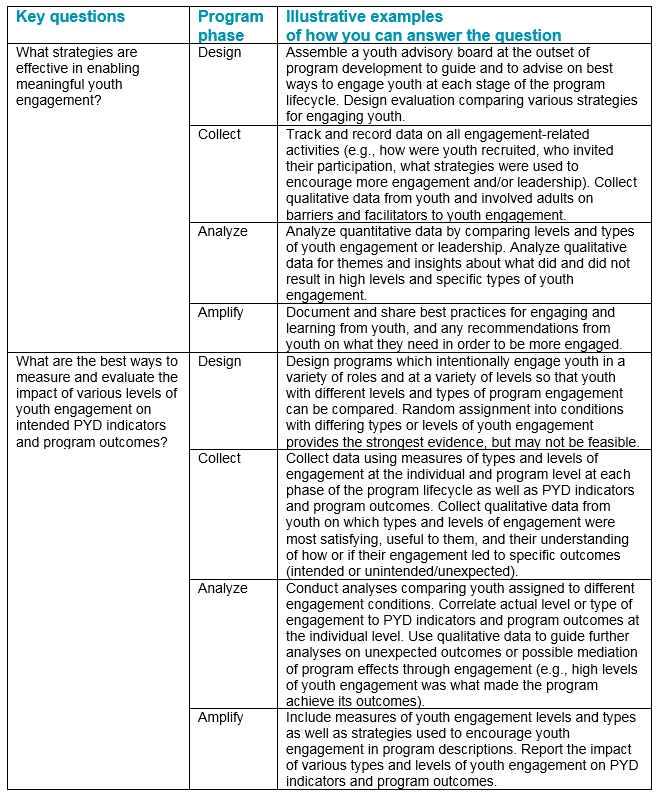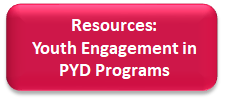Youth Engagement in PYD Programs
GAP: Only about half of the programs identified in the systematic review explicitly targeted youth engagement and/or leadership as an outcome.
Youth engagement is essential to PYD because it promotes youth agency and contribution. Creating an enabling environment along with promoting youth-led activities can help youth build their capacity to realize their full potential. Youth Engagement is a critical component of meaningful PYD, because, without it, youth participation in development is more tokenism than transformative.
The YouthPower Learning community of practice on youth engagement defines meaningful youth engagement as: “…an inclusive, intentional, mutually-respectful partnership between youth and adults whereby power is shared, respective contributions are valued, and young people's ideas, perspectives, skills, and strengths are integrated into the design and delivery of programs, strategies, policies, funding mechanisms, and organizations that affect their lives and their communities, countries, and globally.” As the global development community moves toward more meaningful youth engagement in PYD, there remain key questions about effective strategies and measurement of the same.
The ability of youth to contribute to the development of their societies hinges on ensuring that opportunities for inclusion and participation exist. Through active participation in decision-making about programs and policies that affect them and their peers, young people are empowered to play a vital role in decisions that inform the provision and delivery of youth-appropriate services in ways that could ultimately result in improved outcomes. However, there are personal, structural, and cultural barriers that can impede meaningful and effective youth participation.
In order to examine whether the necessary conditions have been met to allow meaningful participation, it is also necessary to identify the desired outcomes of that participation and then to measure the extent to which those outcomes have been achieved. Success of youth participation efforts should not only be measured by scope and impact on outcomes, but also by the quality of such engagement. There is a need to develop standardized scales or indicators to measure levels and effectiveness of youth engagement in policymaking and programming across sectors.
This theme in the PYD Learning Agenda provides a starting place for addressing key gaps in the evidence for youth engagement.
Key questions and illustrative sub-questions
1. What strategies are effective in enabling meaningful youth engagement?
- How do we distinguish leadership from participation?
- What are effective strategies to prepare adults to share power with young people?
- How can we understand and build youth leadership across developmental phases?
- How do we develop youth-driven programs which empower youth as change agents?
- Do particular types of youth engagement or leadership reduce program costs or increase program benefits?
- Are PYD programs with high levels of youth engagement or specific types of youth engagement more effective than those without?
- Do youth who engage with PYD programs in depth or in specific ways get more benefit from those programs than youth who are less engaged?
- How does youth engagement benefit others in the community?
Click the button below to access resources on Youth Engagement in PYD Programs.
Potential Strategies to Address Youth Engagement in PYD Programs:

For more on measuring youth engagement, visit the Youth Engagement Measurement Guide.







